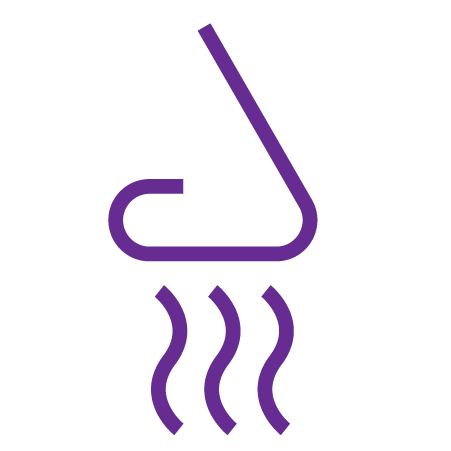WINETASTING
101
SET THE STAGE
You’ll probably want glasses. Any will do, no need to break the bank. Go for a perfectly clear bowl, preferably stemmed as the warmth of your hands can affect taste. We’ve played with glassware ranging from hand-me-downs to Baccarat and everything in between.
Go one better: nix perfume or scented candles, gather paper and pencil to make notes. Have a vessel to spit: in actual tests we’ve proven that saving the drinking for later improves accuracy.
STEP 1 SEE IT
Candlelight and wine may go together like cookies and creme, but not when blind tasting. Turn up the lights and look at the wine over a piece of white paper or a light surface. Note depth, hue and clarity— they indicate the age and overall health of a wine. Grapes come in all hues.
Other clues: Sediment can indicate a minimally processed or aged wine. Legs, or tears, streaking the sides of the glass can mean the wine has heavier alcohol content or more residual sugar. Or c: all of the above.
Having fun yet?
STEP 2 SMELL IT
Swirl the wine in the glass; air releases aroma molecules. A slow spiral will do. Take a short sniff, then a longer one, waiting 20 seconds in between to reset your nose hairs. (Yep, that’s a thing.)
Jot down any impressions: Big? Buttery? Bright? Start with a broad descriptor, then narrow it down: if it’s fruity, is that citrus or jam? If you’re really sure go deeper —cherry, or plum?
Go one better: Sniff with your mouth open or over the glass to add nuance to your sense of smell. The pros call it ‘active inhalation.
STEP 3 SIP IT
Now you taste. A sip is one-to-two tablespoon (approx.). Hold it in your mouth, then swish it around. Does it taste like it smelled? Is it sweet? Dry? Both?
Other clues: Mouthfeel is a term wine geeks use to gauge body in wine. Think milk: is it heavy, like cream, or thin, as in skim? In general, the heavier or riper the wine the more alcohol it has and therefore the more viscous, or full, it feels in your mouth. To complicate matters, some processing techniques, like barrel aging, can make a difference too.
Tannins: make your teeth dry, like black tea. Tannins come from grape skins and intensify as wine ages. Too high a concentration can cause bitterness.
Acidity: a tartness that makes your mouth water or pucker. All wines have it – acid creates life and allows aging. Too little and a wine is 'flabby,' too much and a wine is undrinkable.
STEP 4 ENJOY
Put it all together. Think about how long the taste stays on your palate: higher quality wines generally stick with you longer. Finally, balance; the crucial test. Do the elements co-exist harmoniously? If something sings out to you, like as not balance is off.
Pro tip: A balanced wine is seamless.
STEP 5 RINSE & REPEAT
The more you taste, the deeper you understand wine characteristics. As taste is more finely tuned, your brain connects those clues to detect the wine’s country of origin, grape, region and even label.
Go one further: Keep a wine notebook, jotting down what you learn from each game. The app stores your games and favorite wines to recall even when not playing.






